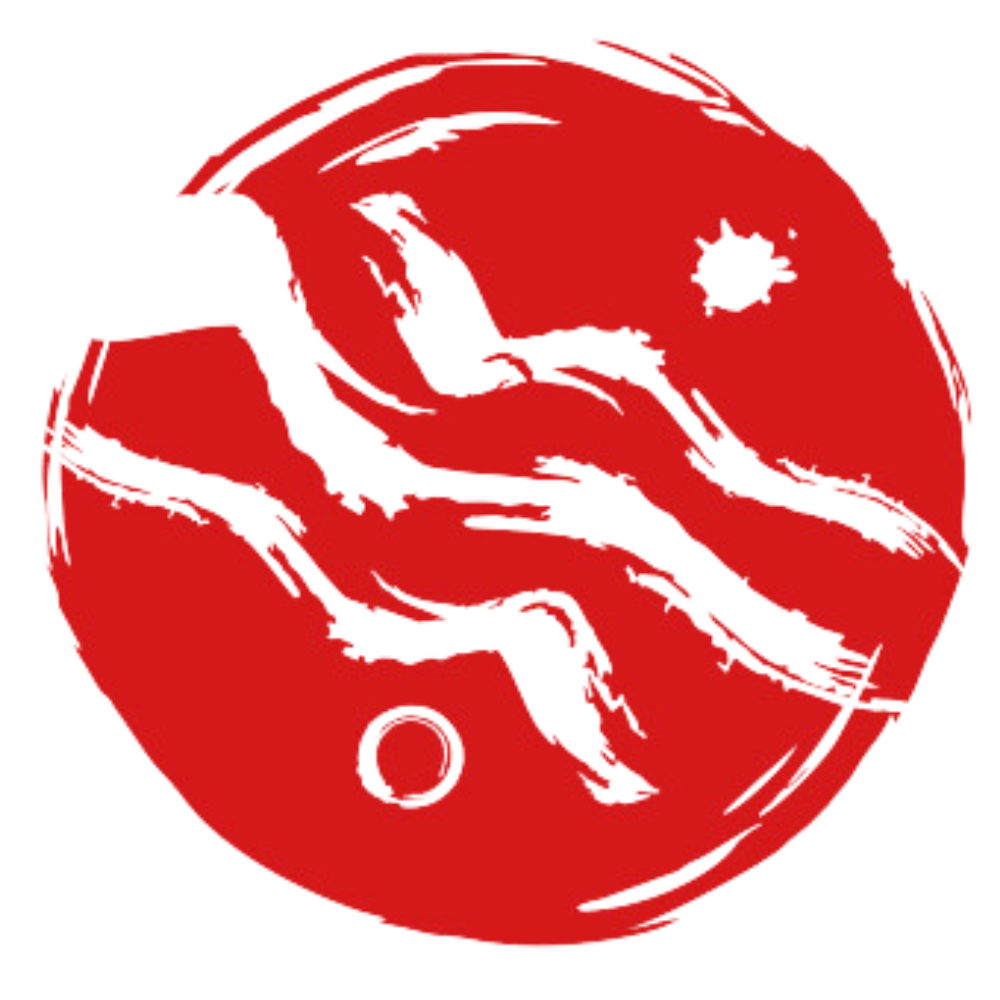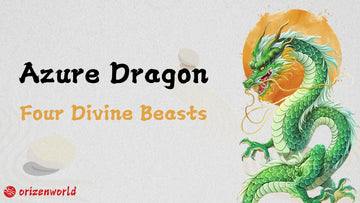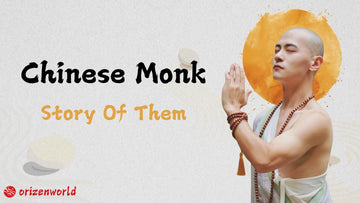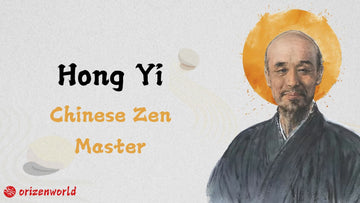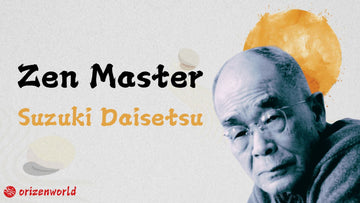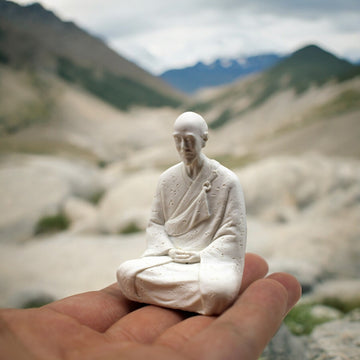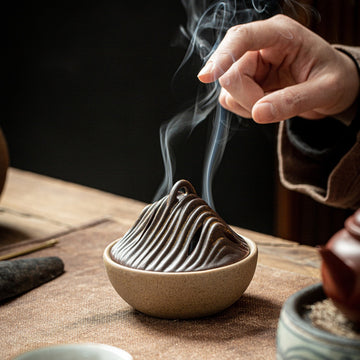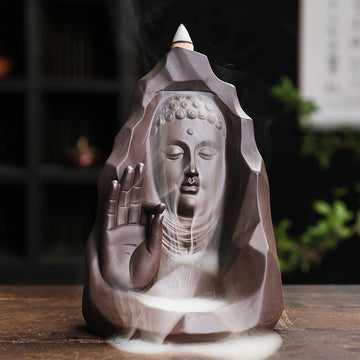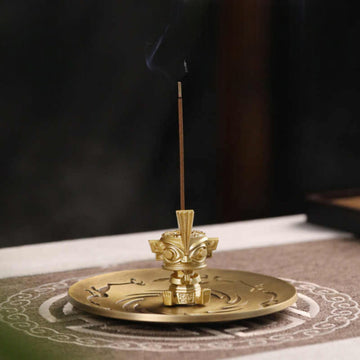When we mention mythical creatures in China, one creature that will definitely be noticed is the Chinese dragon. It is one of the Four Divine Beasts, as popular as the White Tiger. In fact, phrases like "Azure Dragon left, White Tiger right" are commonly heard in Chinese culture. Today, if you're seeking more information about the Azure Dragon, you're in the right place. I will guide you through its fascinating story, its significance in Chinese culture, and its role in Feng Shui. Be sure to read through the entire article to uncover the many layers of this legendary creature.
The Azure Dragon (青龙) is one of the Four Divine Beasts in ancient Chinese mythology, revered as a spiritual creature. It originated from early star worship, representing the East among the Seven Mansions of the Chinese zodiac.
In the Five Elements theory, the Azure Dragon is associated with the Wood element and the Spring season, symbolizing growth and vitality. In Taoism, it is referred to as Meng Zhang Shen Jun, a divine figure. The Azure Dragon holds significant cultural value in China, frequently appearing in Feng Shui and folk beliefs, where it is seen as a symbol of power, protection, and prosperity.
The Azure Dragon is one of the Four Symbols (青龙, 白虎, 朱雀, 玄武) in traditional Chinese culture, often depicted with the body of a long snake, the head of a qilin (a mythical creature), a fish’s tail, long whiskers, antler-like horns, and five claws. Its majestic appearance is a powerful representation of strength and grace. The dragon is a symbol of harmony and balance in Chinese mythology, playing a central role in various cultural and religious practices. As a guardian of the East, it represents the flourishing of life and the natural world.
Before diving into the fascinating legends of the Azure Dragon, let's first explore how this mythical creature was born from the imagination of the Chinese people. The story begins with ancient Chinese astronomers, who, when observing celestial phenomena, selected 28 stars near the equator and ecliptic as reference points for their star system. These stars were grouped into 28 "Mansions," which include the stars Jiao, Kang, Di, Fang, Xin, Wei, and Ji; Dou, Niu, Nu, Xu, Wei, Shi, Bi; Kui, Lou, Wei, Ang, Bi, Zi, Shen; and Jing, Gui, Liu, Xing, Zhang, Yi, Zhen. This is the origin of the well-known 28 lunar mansions.
To simplify memory and analysis, the ancients divided these 28 stars into four groups based on direction, each group containing seven stars. They then imagined each group as a different animal, according to the shape of the stars. The seven stars in the East—Jiao, Kang, Di, Fang, Xin, Wei, and Ji—were envisioned as a dragon soaring through the sky. Additionally, according to the Five Elements theory, the East corresponds to the Wood element, and its color is green (青), leading the ancients to call this celestial creature the Azure Dragon.
This is why the Azure Dragon is associated with the East. It represents not just a mythical beast, but a powerful symbol of vitality, renewal, and protection in Chinese culture. Its connection to the stars and its symbolic color ties it deeply to the natural world and cosmic forces in traditional Chinese thought.
As we mentioned earlier, the Azure Dragon represents the East, and in Chinese culture, the East is considered the most esteemed direction, symbolizing the position of a ruler. This naturally elevates the Azure Dragon to the highest rank among the Four Symbols. In ancient China, traditional directions were oriented with the South at the top, a stark contrast to today’s North-up orientation. Therefore, the arrangement of the Four Symbols is described as "left Azure Dragon (East), right White Tiger (West), front Vermilion Bird (South), and back Black Tortoise (North)."
This arrangement explains why the Azure Dragon occupies the top spot. The East, where the Azure Dragon reigns, is seen as a place of new beginnings, energy, and vitality. It is linked to the sunrise, representing rebirth and hope. The Dragon's position signifies not only its strength but also its connection to the cycle of life and nature.
In ancient Chinese cosmology, the East’s prominence made it a key area for rulers, with the Azure Dragon acting as a celestial protector and symbol of vitality. The significance of the Azure Dragon’s position in the Four Symbols reflects its deep importance in Chinese thought, linking it to both the natural world and the cosmic order. The Dragon, as the guardian of the East, represents the ultimate power and balance in traditional Chinese culture.
Among the many mystical creatures in Chinese Feng Shui, the Azure Dragon holds a prominent place. Representing power, protection, and prosperity, this celestial being is deeply rooted in Feng Shui principles and plays a key role in achieving balance and harmony.
In traditional Feng Shui, the Azure Dragon is positioned on the left, while the White Tiger is placed on the right. This pairing is essential in spatial arrangements, as each side influences different aspects of life. The Azure Dragon sector is associated with men, career growth, academic success, and influential mentors. A strong and properly positioned Azure Dragon brings opportunities, stability, and support. If this sector is weak—such as being lower than the right side—it may result in career stagnation or a lack of guidance from benefactors. Meanwhile, the White Tiger sector relates to women and financial stability, and an imbalance in this area could lead to financial loss, disputes, or legal troubles.
For example, in home Feng Shui, a higher left side (such as a bookshelf or a wall) and a lower right side create a favorable balance. In the living room, placing a sound system on the right may disrupt harmony, potentially causing health issues or financial instability.
another example, In commercial spaces, the entrance should ideally favor the Azure Dragon side, meaning the left side when looking out from the door. If the left is lower than the right, adding tall green plants or a lightbox can strengthen its energy. Ensuring openness in front of the space further enhances prosperity, making the environment both harmonious and auspicious.
Customs Related to the Azure Dragon: The Dragon’s Head Lifting on the Second Day of the Second Month
In Chinese tradition, the second day of the second lunar month is a highly significant date known as "The Dragon’s Head Lifting". This day marks the awakening of the Azure Dragon, a powerful celestial symbol in Feng Shui, associated with prosperity, renewal, and growth. One of the most well-known customs on this day is getting a haircut, as it is believed to bring good luck for the entire year. Barbershops across China experience their busiest day of the year, with people eager to align themselves with the auspicious energy of the occasion.
The origins of this tradition are deeply rooted in ancient Chinese cosmology and Feng Shui beliefs. According to historical texts, the Azure Dragon’s seven stars begin to rise in the eastern sky around this time, signifying the start of spring and the return of Yang energy.
The first star to appear is referred to as the "Dragon’s Horn", symbolizing the dragon lifting its head after a period of dormancy. In the Book of Changes (I Ching), the time before this day is described as "the hidden dragon in the abyss", indicating that although spring has begun, its energy remains concealed. However, after this day, the dragon emerges, bringing forth prosperity, new opportunities, and growth.
As a result, many Chinese believe that cutting their hair on this day aligns them with the dragon’s rising power, ensuring a year of success, good fortune, and protection. This custom remains widely practiced today, demonstrating the enduring influence of Feng Shui and celestial traditions in everyday life.
Azure Dragon tattoos hold deep cultural significance, especially in Chinese and Japanese traditions. In the world of the Yakuza and other organized groups, having an Azure Dragon tattoo on the back is believed to provide protection, strength, and dominance. The Azure Dragon is not just a mythical creature but a symbol of power, leadership, and resilience, making it a preferred choice among those who seek to embody these qualities.
In Chinese culture, Azure Dragon tattoos are often paired with the White Tiger, following the Feng Shui principle of left Azure Dragon and right White Tiger. This balance represents harmony between strength and strategy, with the Azure Dragon symbolizing authority, career success, and guardianship, while the White Tiger stands for wealth and protection against misfortune. Many believe that having both tattoos ensures a well-balanced life and destiny.
The mythological origins of the Azure Dragon further enhance its appeal. As one of the Four Celestial Beasts, it is associated with the east, spring, and renewal, making it a symbol of continuous growth and new beginnings. Whether worn for spiritual protection, luck, or status, an Azure Dragon tattoo is a powerful emblem of inner strength and unwavering determination.
When applying Feng Shui principles, it is crucial to follow the left Azure Dragon, right White Tiger layout. Using the human body as a reference, the left-hand side represents the Azure Dragon and the right-hand side represents the White Tiger. Proper positioning and balance between these two forces can enhance prosperity, stability, and career success.
When applying Feng Shui principles, it is crucial to follow the left Azure Dragon, right White Tiger layout. Using the human body as a reference, the left-hand side represents the Azure Dragon and the right-hand side represents the White Tiger. Proper positioning and balance between these two forces can enhance prosperity, stability, and career success.
The Azure Dragon side should be higher and more stable than the White Tiger side. This arrangement symbolizes support from benefactors, career growth, and a peaceful home. A strong Azure Dragon side benefits male household members, attracting opportunities and success.
If the Azure Dragon side is too low, it can lead to a lack of support, career setbacks, and missed opportunities.
The White Tiger side should be quiet and lower than the Azure Dragon side. It is unlucky if the White Tiger side is dominant, as it can cause financial difficulties, emotional instability, and family conflicts.
Placing an Azure Dragon statue can help balance energy, but its positioning is key:
The ideal spot is the northeastern area of a house, as it promotes career growth and wealth accumulation.
In an office, placing the Azure Dragon on the northeastern side of a desk can enhance work success and leadership qualities.
In a living room or dining area, positioning the statue in the northeast corner fosters family harmony and happiness.
By carefully arranging your space following these Feng Shui principles, you can harness the power of the Azure Dragon to create a prosperous and balanced environment.
